Seven Domain Model: Gree_N_ature Recycling Business Opportunity Plan
VerifiedAdded on 2023/06/18
|10
|2114
|157
Report
AI Summary
This report presents a comprehensive business plan for Gree_N_ature, a recycling venture centered around reverse vending machines, analyzed through the seven domain model. The concept focuses on recycling with rewards, targeting environmentally conscious consumers. The business model involves both physical vending machine operations and e-commerce, with manufacturing in Germany and expansion plans in the UK. The report includes micro and macro market analyses, a PESTLE analysis highlighting political stability and environmental focus in the UK, and an industry analysis using Porter's Five Forces. A VRIO analysis assesses the company's internal resources and competitive advantages. The mission statement emphasizes environmental conservation and promoting recycling for future generations. Critical success factors include advanced technology, participative management, and a unique recycling process. The report concludes that Gree_N_ature has a strong potential for growth in the UK due to its focus on sustainability and environmental welfare.
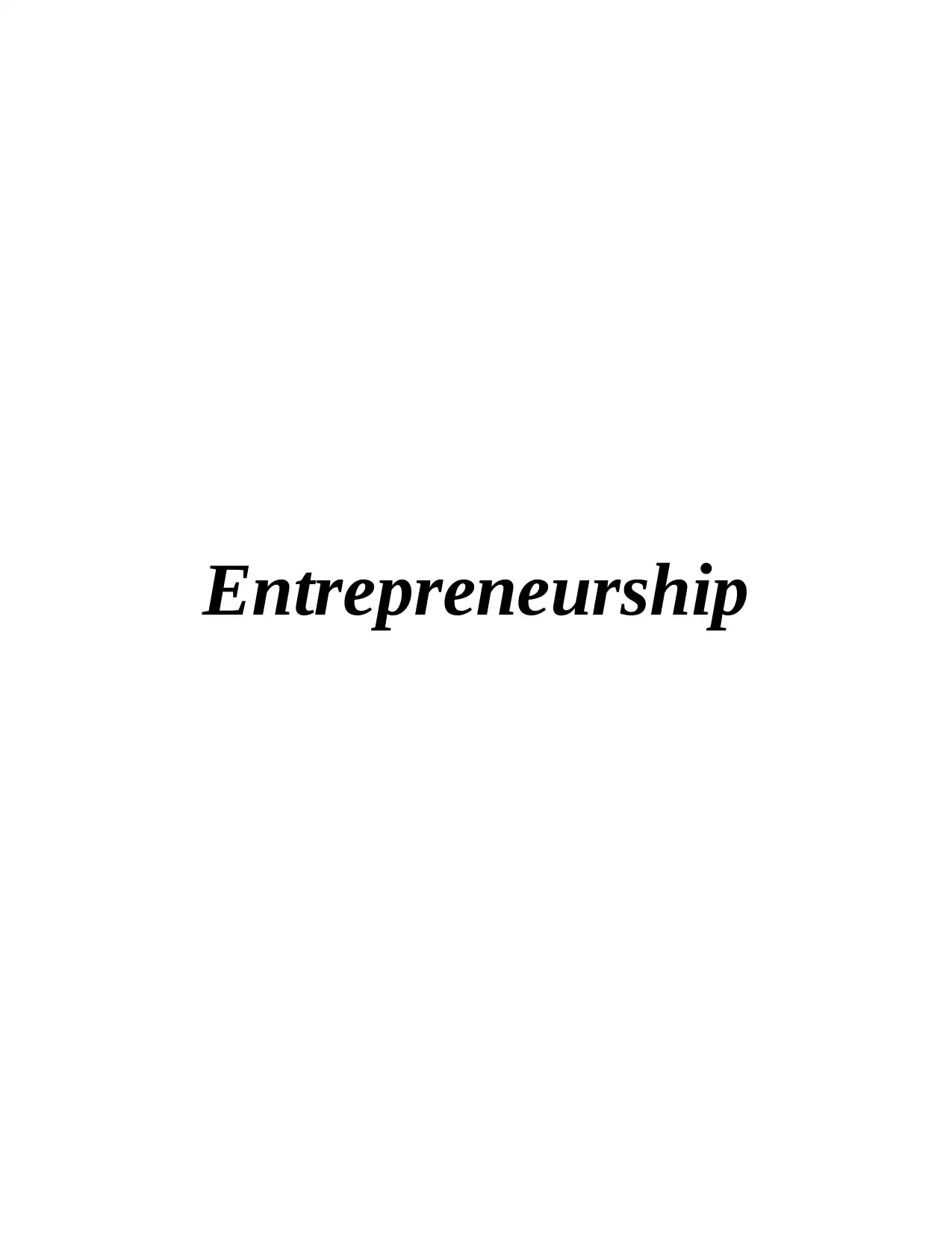
Entrepreneurship
Paraphrase This Document
Need a fresh take? Get an instant paraphrase of this document with our AI Paraphraser
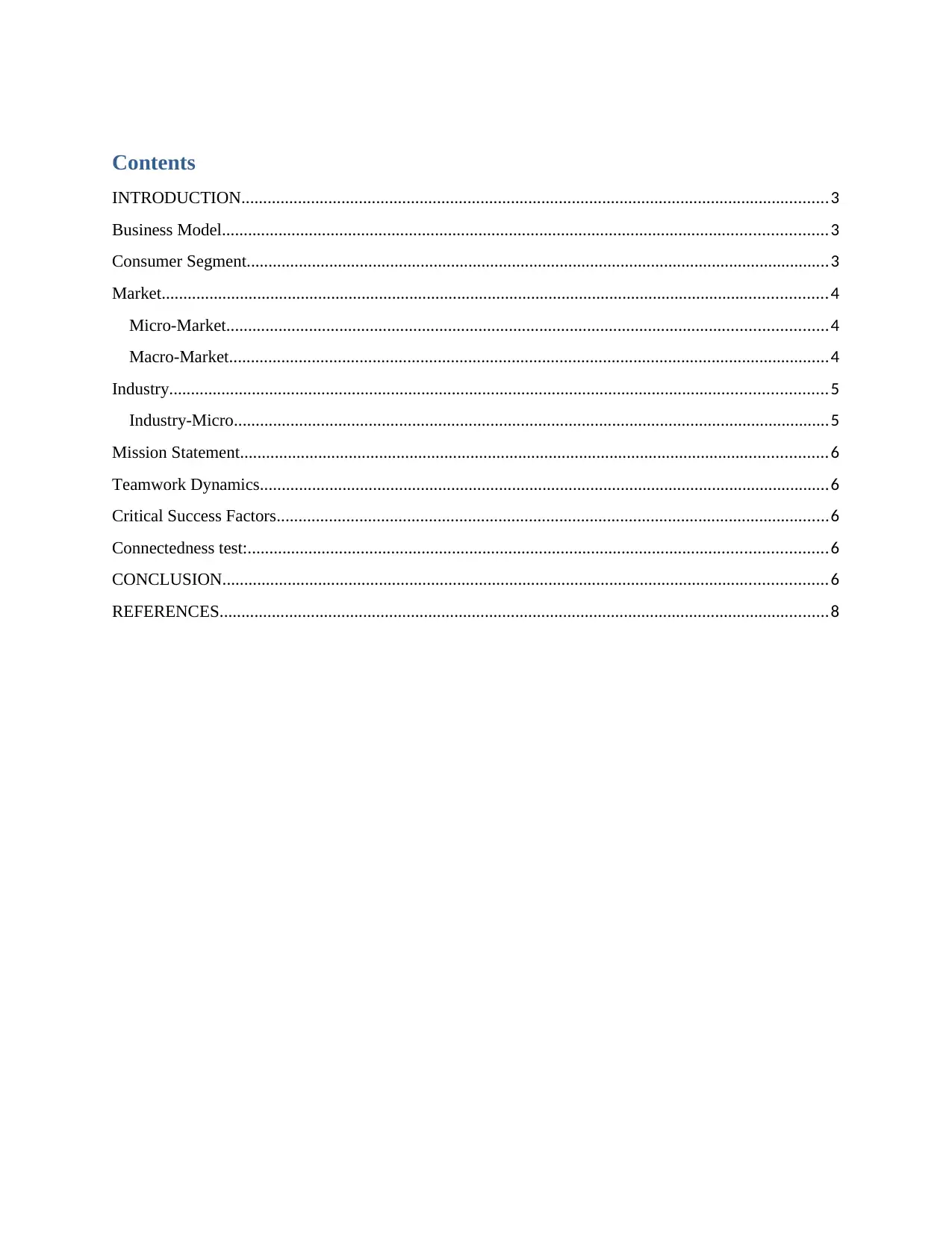
Contents
INTRODUCTION.......................................................................................................................................3
Business Model...........................................................................................................................................3
Consumer Segment......................................................................................................................................3
Market.........................................................................................................................................................4
Micro-Market..........................................................................................................................................4
Macro-Market..........................................................................................................................................4
Industry.......................................................................................................................................................5
Industry-Micro.........................................................................................................................................5
Mission Statement.......................................................................................................................................6
Teamwork Dynamics...................................................................................................................................6
Critical Success Factors...............................................................................................................................6
Connectedness test:.....................................................................................................................................6
CONCLUSION...........................................................................................................................................6
REFERENCES............................................................................................................................................8
INTRODUCTION.......................................................................................................................................3
Business Model...........................................................................................................................................3
Consumer Segment......................................................................................................................................3
Market.........................................................................................................................................................4
Micro-Market..........................................................................................................................................4
Macro-Market..........................................................................................................................................4
Industry.......................................................................................................................................................5
Industry-Micro.........................................................................................................................................5
Mission Statement.......................................................................................................................................6
Teamwork Dynamics...................................................................................................................................6
Critical Success Factors...............................................................................................................................6
Connectedness test:.....................................................................................................................................6
CONCLUSION...........................................................................................................................................6
REFERENCES............................................................................................................................................8
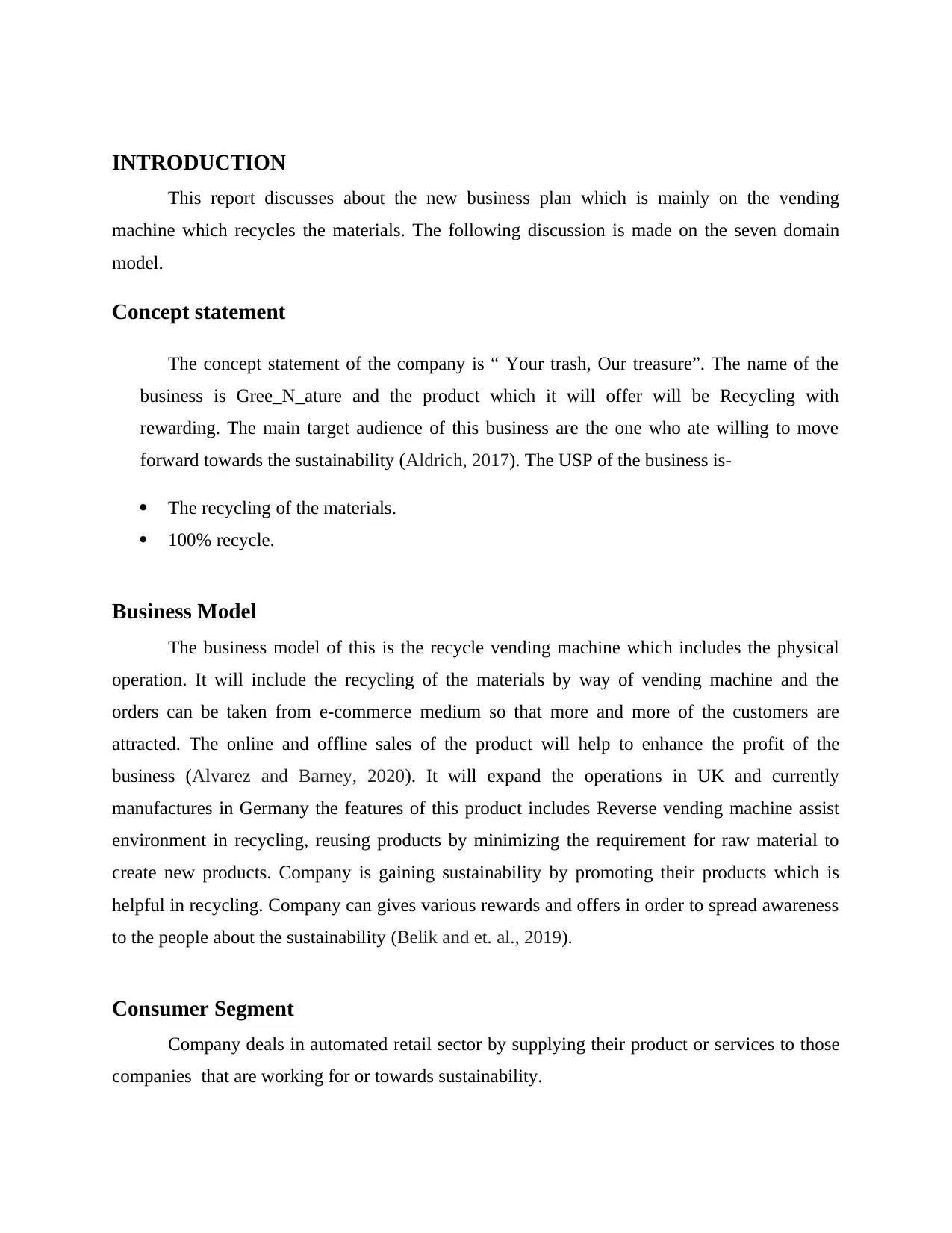
INTRODUCTION
This report discusses about the new business plan which is mainly on the vending
machine which recycles the materials. The following discussion is made on the seven domain
model.
Concept statement
The concept statement of the company is “ Your trash, Our treasure”. The name of the
business is Gree_N_ature and the product which it will offer will be Recycling with
rewarding. The main target audience of this business are the one who ate willing to move
forward towards the sustainability (Aldrich, 2017). The USP of the business is-
The recycling of the materials.
100% recycle.
Business Model
The business model of this is the recycle vending machine which includes the physical
operation. It will include the recycling of the materials by way of vending machine and the
orders can be taken from e-commerce medium so that more and more of the customers are
attracted. The online and offline sales of the product will help to enhance the profit of the
business (Alvarez and Barney, 2020). It will expand the operations in UK and currently
manufactures in Germany the features of this product includes Reverse vending machine assist
environment in recycling, reusing products by minimizing the requirement for raw material to
create new products. Company is gaining sustainability by promoting their products which is
helpful in recycling. Company can gives various rewards and offers in order to spread awareness
to the people about the sustainability (Belik and et. al., 2019).
Consumer Segment
Company deals in automated retail sector by supplying their product or services to those
companies that are working for or towards sustainability.
This report discusses about the new business plan which is mainly on the vending
machine which recycles the materials. The following discussion is made on the seven domain
model.
Concept statement
The concept statement of the company is “ Your trash, Our treasure”. The name of the
business is Gree_N_ature and the product which it will offer will be Recycling with
rewarding. The main target audience of this business are the one who ate willing to move
forward towards the sustainability (Aldrich, 2017). The USP of the business is-
The recycling of the materials.
100% recycle.
Business Model
The business model of this is the recycle vending machine which includes the physical
operation. It will include the recycling of the materials by way of vending machine and the
orders can be taken from e-commerce medium so that more and more of the customers are
attracted. The online and offline sales of the product will help to enhance the profit of the
business (Alvarez and Barney, 2020). It will expand the operations in UK and currently
manufactures in Germany the features of this product includes Reverse vending machine assist
environment in recycling, reusing products by minimizing the requirement for raw material to
create new products. Company is gaining sustainability by promoting their products which is
helpful in recycling. Company can gives various rewards and offers in order to spread awareness
to the people about the sustainability (Belik and et. al., 2019).
Consumer Segment
Company deals in automated retail sector by supplying their product or services to those
companies that are working for or towards sustainability.
⊘ This is a preview!⊘
Do you want full access?
Subscribe today to unlock all pages.

Trusted by 1+ million students worldwide
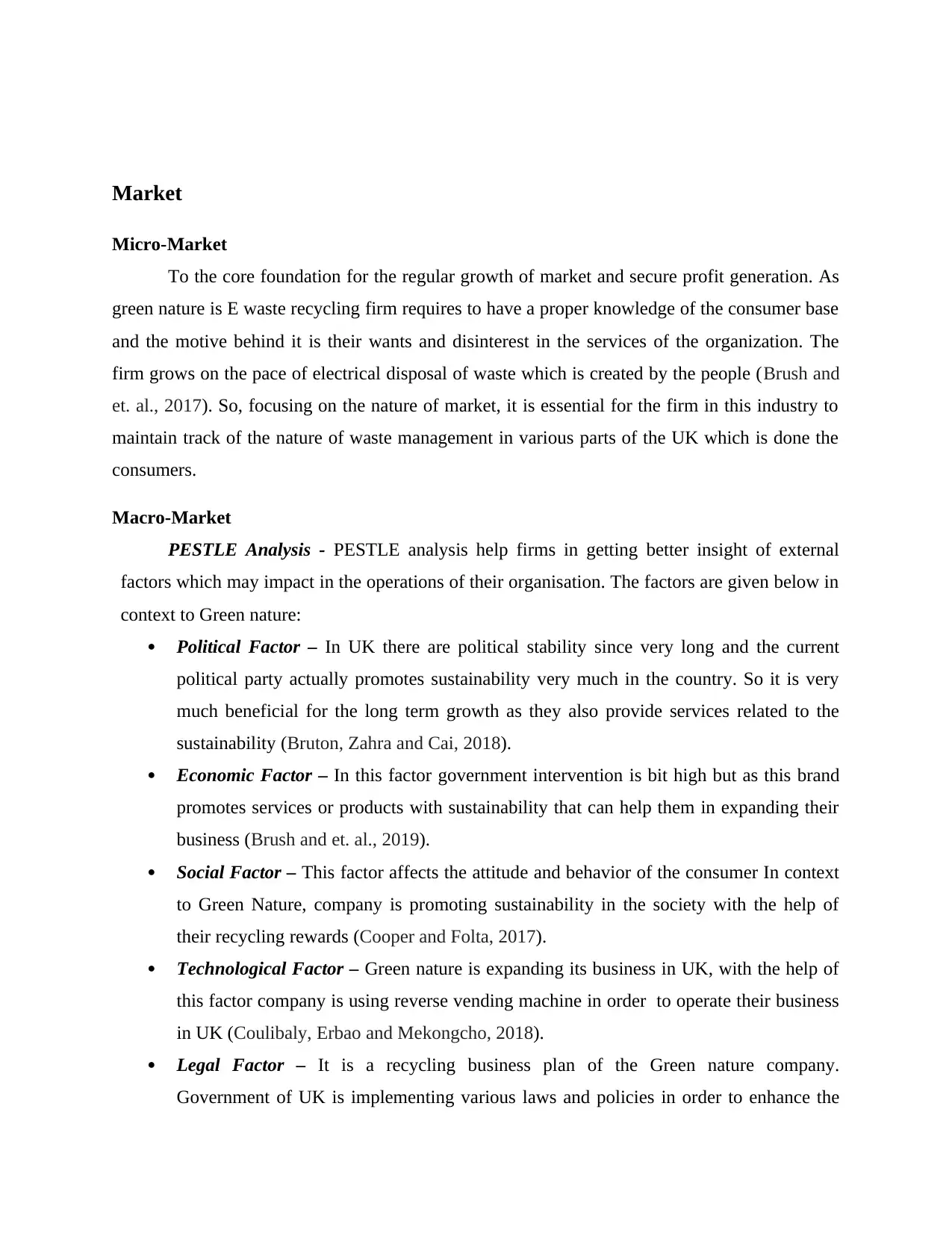
Market
Micro-Market
To the core foundation for the regular growth of market and secure profit generation. As
green nature is E waste recycling firm requires to have a proper knowledge of the consumer base
and the motive behind it is their wants and disinterest in the services of the organization. The
firm grows on the pace of electrical disposal of waste which is created by the people (Brush and
et. al., 2017). So, focusing on the nature of market, it is essential for the firm in this industry to
maintain track of the nature of waste management in various parts of the UK which is done the
consumers.
Macro-Market
PESTLE Analysis - PESTLE analysis help firms in getting better insight of external
factors which may impact in the operations of their organisation. The factors are given below in
context to Green nature:
Political Factor – In UK there are political stability since very long and the current
political party actually promotes sustainability very much in the country. So it is very
much beneficial for the long term growth as they also provide services related to the
sustainability (Bruton, Zahra and Cai, 2018).
Economic Factor – In this factor government intervention is bit high but as this brand
promotes services or products with sustainability that can help them in expanding their
business (Brush and et. al., 2019).
Social Factor – This factor affects the attitude and behavior of the consumer In context
to Green Nature, company is promoting sustainability in the society with the help of
their recycling rewards (Cooper and Folta, 2017).
Technological Factor – Green nature is expanding its business in UK, with the help of
this factor company is using reverse vending machine in order to operate their business
in UK (Coulibaly, Erbao and Mekongcho, 2018).
Legal Factor – It is a recycling business plan of the Green nature company.
Government of UK is implementing various laws and policies in order to enhance the
Micro-Market
To the core foundation for the regular growth of market and secure profit generation. As
green nature is E waste recycling firm requires to have a proper knowledge of the consumer base
and the motive behind it is their wants and disinterest in the services of the organization. The
firm grows on the pace of electrical disposal of waste which is created by the people (Brush and
et. al., 2017). So, focusing on the nature of market, it is essential for the firm in this industry to
maintain track of the nature of waste management in various parts of the UK which is done the
consumers.
Macro-Market
PESTLE Analysis - PESTLE analysis help firms in getting better insight of external
factors which may impact in the operations of their organisation. The factors are given below in
context to Green nature:
Political Factor – In UK there are political stability since very long and the current
political party actually promotes sustainability very much in the country. So it is very
much beneficial for the long term growth as they also provide services related to the
sustainability (Bruton, Zahra and Cai, 2018).
Economic Factor – In this factor government intervention is bit high but as this brand
promotes services or products with sustainability that can help them in expanding their
business (Brush and et. al., 2019).
Social Factor – This factor affects the attitude and behavior of the consumer In context
to Green Nature, company is promoting sustainability in the society with the help of
their recycling rewards (Cooper and Folta, 2017).
Technological Factor – Green nature is expanding its business in UK, with the help of
this factor company is using reverse vending machine in order to operate their business
in UK (Coulibaly, Erbao and Mekongcho, 2018).
Legal Factor – It is a recycling business plan of the Green nature company.
Government of UK is implementing various laws and policies in order to enhance the
Paraphrase This Document
Need a fresh take? Get an instant paraphrase of this document with our AI Paraphraser
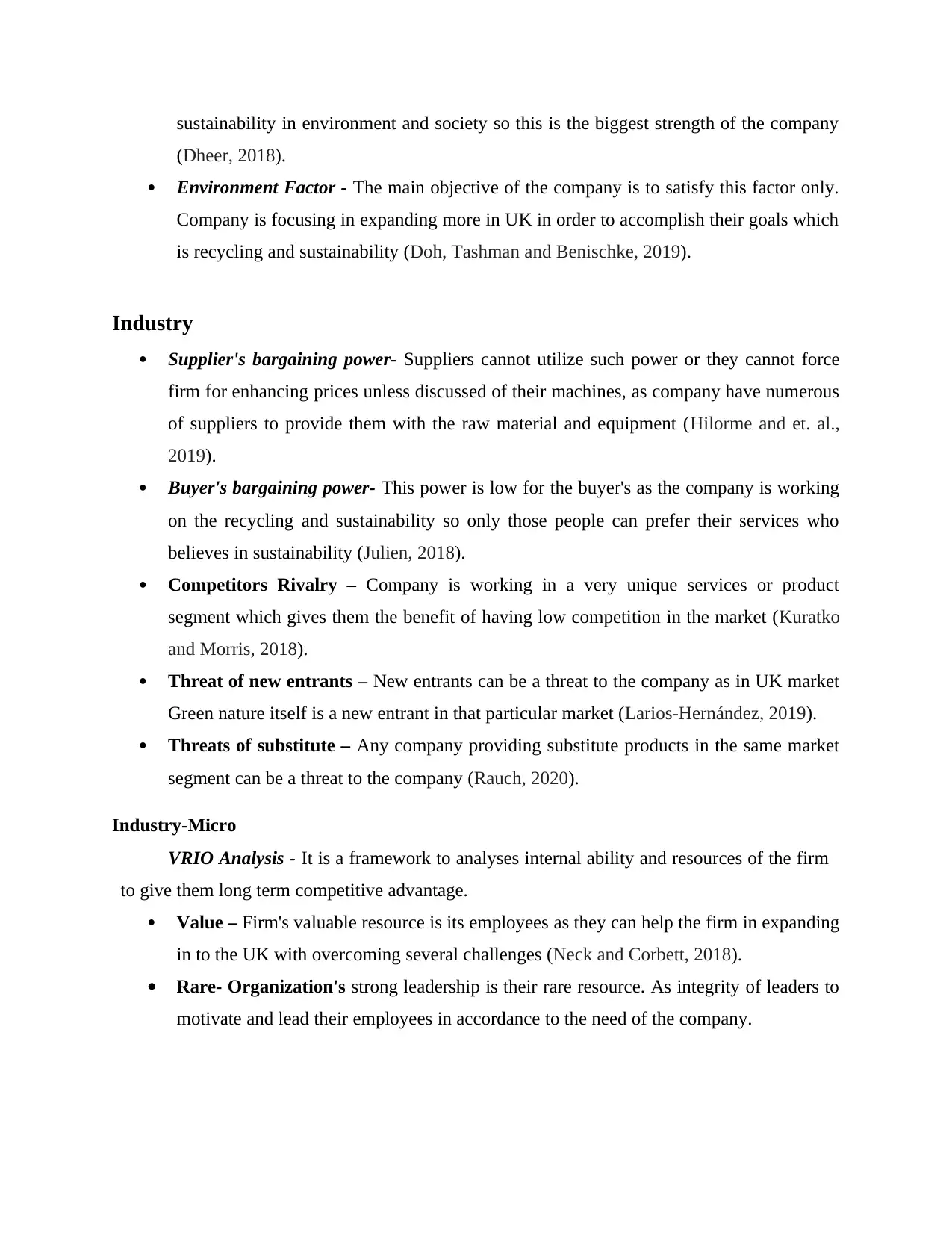
sustainability in environment and society so this is the biggest strength of the company
(Dheer, 2018).
Environment Factor - The main objective of the company is to satisfy this factor only.
Company is focusing in expanding more in UK in order to accomplish their goals which
is recycling and sustainability (Doh, Tashman and Benischke, 2019).
Industry
Supplier's bargaining power- Suppliers cannot utilize such power or they cannot force
firm for enhancing prices unless discussed of their machines, as company have numerous
of suppliers to provide them with the raw material and equipment (Hilorme and et. al.,
2019).
Buyer's bargaining power- This power is low for the buyer's as the company is working
on the recycling and sustainability so only those people can prefer their services who
believes in sustainability (Julien, 2018).
Competitors Rivalry – Company is working in a very unique services or product
segment which gives them the benefit of having low competition in the market (Kuratko
and Morris, 2018).
Threat of new entrants – New entrants can be a threat to the company as in UK market
Green nature itself is a new entrant in that particular market (Larios-Hernández, 2019).
Threats of substitute – Any company providing substitute products in the same market
segment can be a threat to the company (Rauch, 2020).
Industry-Micro
VRIO Analysis - It is a framework to analyses internal ability and resources of the firm
to give them long term competitive advantage.
Value – Firm's valuable resource is its employees as they can help the firm in expanding
in to the UK with overcoming several challenges (Neck and Corbett, 2018).
Rare- Organization's strong leadership is their rare resource. As integrity of leaders to
motivate and lead their employees in accordance to the need of the company.
(Dheer, 2018).
Environment Factor - The main objective of the company is to satisfy this factor only.
Company is focusing in expanding more in UK in order to accomplish their goals which
is recycling and sustainability (Doh, Tashman and Benischke, 2019).
Industry
Supplier's bargaining power- Suppliers cannot utilize such power or they cannot force
firm for enhancing prices unless discussed of their machines, as company have numerous
of suppliers to provide them with the raw material and equipment (Hilorme and et. al.,
2019).
Buyer's bargaining power- This power is low for the buyer's as the company is working
on the recycling and sustainability so only those people can prefer their services who
believes in sustainability (Julien, 2018).
Competitors Rivalry – Company is working in a very unique services or product
segment which gives them the benefit of having low competition in the market (Kuratko
and Morris, 2018).
Threat of new entrants – New entrants can be a threat to the company as in UK market
Green nature itself is a new entrant in that particular market (Larios-Hernández, 2019).
Threats of substitute – Any company providing substitute products in the same market
segment can be a threat to the company (Rauch, 2020).
Industry-Micro
VRIO Analysis - It is a framework to analyses internal ability and resources of the firm
to give them long term competitive advantage.
Value – Firm's valuable resource is its employees as they can help the firm in expanding
in to the UK with overcoming several challenges (Neck and Corbett, 2018).
Rare- Organization's strong leadership is their rare resource. As integrity of leaders to
motivate and lead their employees in accordance to the need of the company.
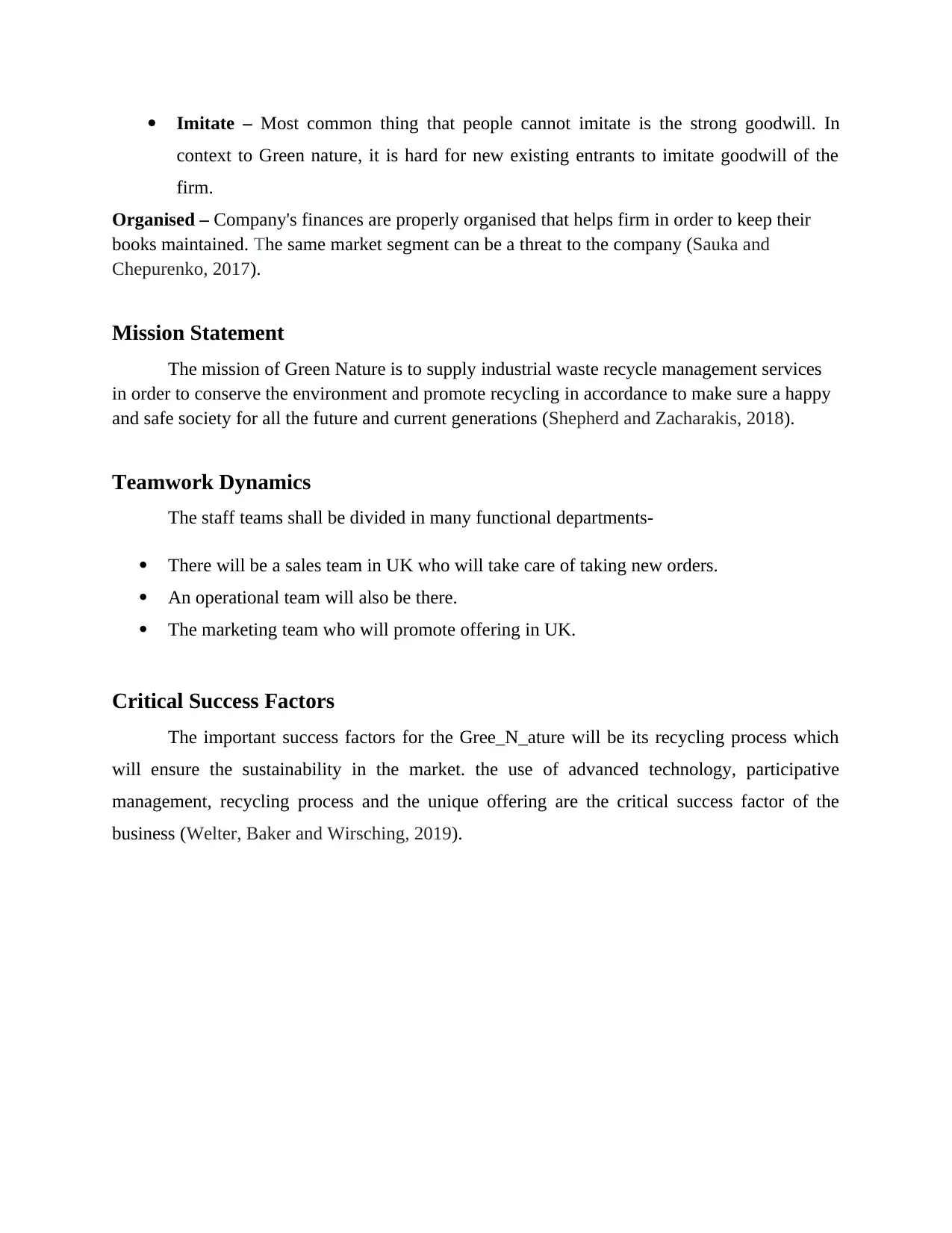
Imitate – Most common thing that people cannot imitate is the strong goodwill. In
context to Green nature, it is hard for new existing entrants to imitate goodwill of the
firm.
Organised – Company's finances are properly organised that helps firm in order to keep their
books maintained. The same market segment can be a threat to the company (Sauka and
Chepurenko, 2017).
Mission Statement
The mission of Green Nature is to supply industrial waste recycle management services
in order to conserve the environment and promote recycling in accordance to make sure a happy
and safe society for all the future and current generations (Shepherd and Zacharakis, 2018).
Teamwork Dynamics
The staff teams shall be divided in many functional departments-
There will be a sales team in UK who will take care of taking new orders.
An operational team will also be there.
The marketing team who will promote offering in UK.
Critical Success Factors
The important success factors for the Gree_N_ature will be its recycling process which
will ensure the sustainability in the market. the use of advanced technology, participative
management, recycling process and the unique offering are the critical success factor of the
business (Welter, Baker and Wirsching, 2019).
context to Green nature, it is hard for new existing entrants to imitate goodwill of the
firm.
Organised – Company's finances are properly organised that helps firm in order to keep their
books maintained. The same market segment can be a threat to the company (Sauka and
Chepurenko, 2017).
Mission Statement
The mission of Green Nature is to supply industrial waste recycle management services
in order to conserve the environment and promote recycling in accordance to make sure a happy
and safe society for all the future and current generations (Shepherd and Zacharakis, 2018).
Teamwork Dynamics
The staff teams shall be divided in many functional departments-
There will be a sales team in UK who will take care of taking new orders.
An operational team will also be there.
The marketing team who will promote offering in UK.
Critical Success Factors
The important success factors for the Gree_N_ature will be its recycling process which
will ensure the sustainability in the market. the use of advanced technology, participative
management, recycling process and the unique offering are the critical success factor of the
business (Welter, Baker and Wirsching, 2019).
⊘ This is a preview!⊘
Do you want full access?
Subscribe today to unlock all pages.

Trusted by 1+ million students worldwide
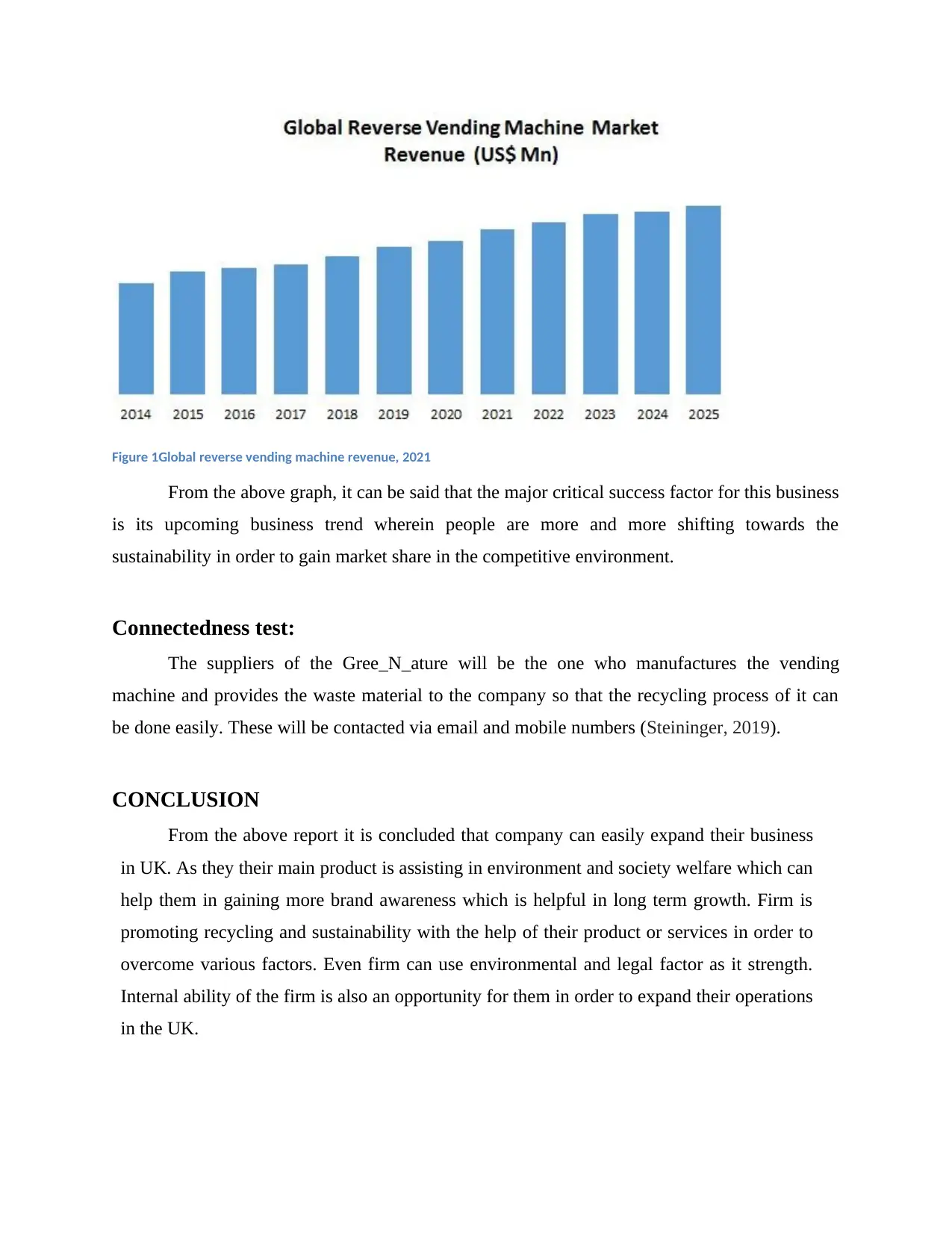
Figure 1Global reverse vending machine revenue, 2021
From the above graph, it can be said that the major critical success factor for this business
is its upcoming business trend wherein people are more and more shifting towards the
sustainability in order to gain market share in the competitive environment.
Connectedness test:
The suppliers of the Gree_N_ature will be the one who manufactures the vending
machine and provides the waste material to the company so that the recycling process of it can
be done easily. These will be contacted via email and mobile numbers (Steininger, 2019).
CONCLUSION
From the above report it is concluded that company can easily expand their business
in UK. As they their main product is assisting in environment and society welfare which can
help them in gaining more brand awareness which is helpful in long term growth. Firm is
promoting recycling and sustainability with the help of their product or services in order to
overcome various factors. Even firm can use environmental and legal factor as it strength.
Internal ability of the firm is also an opportunity for them in order to expand their operations
in the UK.
From the above graph, it can be said that the major critical success factor for this business
is its upcoming business trend wherein people are more and more shifting towards the
sustainability in order to gain market share in the competitive environment.
Connectedness test:
The suppliers of the Gree_N_ature will be the one who manufactures the vending
machine and provides the waste material to the company so that the recycling process of it can
be done easily. These will be contacted via email and mobile numbers (Steininger, 2019).
CONCLUSION
From the above report it is concluded that company can easily expand their business
in UK. As they their main product is assisting in environment and society welfare which can
help them in gaining more brand awareness which is helpful in long term growth. Firm is
promoting recycling and sustainability with the help of their product or services in order to
overcome various factors. Even firm can use environmental and legal factor as it strength.
Internal ability of the firm is also an opportunity for them in order to expand their operations
in the UK.
Paraphrase This Document
Need a fresh take? Get an instant paraphrase of this document with our AI Paraphraser

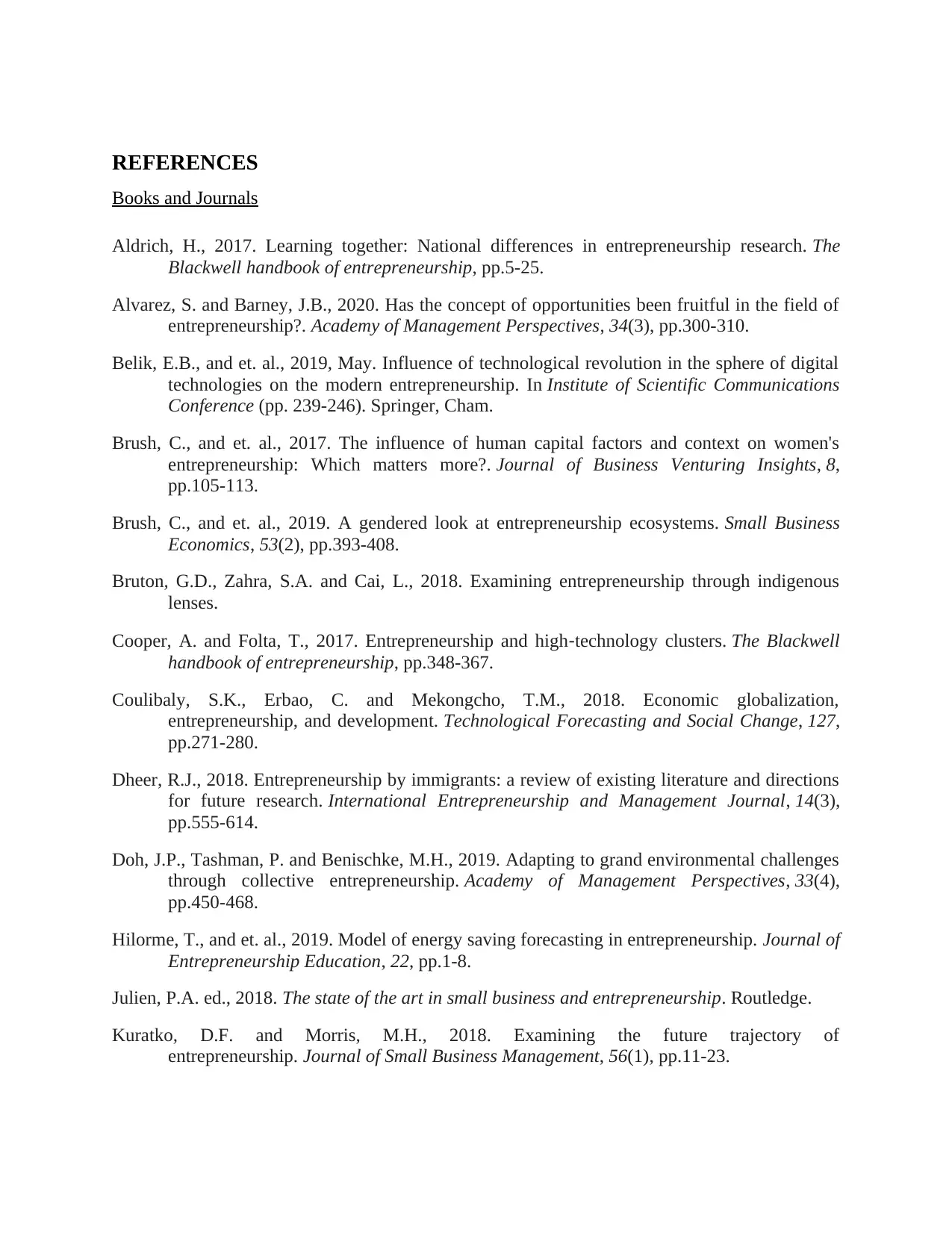
REFERENCES
Books and Journals
Aldrich, H., 2017. Learning together: National differences in entrepreneurship research. The
Blackwell handbook of entrepreneurship, pp.5-25.
Alvarez, S. and Barney, J.B., 2020. Has the concept of opportunities been fruitful in the field of
entrepreneurship?. Academy of Management Perspectives, 34(3), pp.300-310.
Belik, E.B., and et. al., 2019, May. Influence of technological revolution in the sphere of digital
technologies on the modern entrepreneurship. In Institute of Scientific Communications
Conference (pp. 239-246). Springer, Cham.
Brush, C., and et. al., 2017. The influence of human capital factors and context on women's
entrepreneurship: Which matters more?. Journal of Business Venturing Insights, 8,
pp.105-113.
Brush, C., and et. al., 2019. A gendered look at entrepreneurship ecosystems. Small Business
Economics, 53(2), pp.393-408.
Bruton, G.D., Zahra, S.A. and Cai, L., 2018. Examining entrepreneurship through indigenous
lenses.
Cooper, A. and Folta, T., 2017. Entrepreneurship and high‐technology clusters. The Blackwell
handbook of entrepreneurship, pp.348-367.
Coulibaly, S.K., Erbao, C. and Mekongcho, T.M., 2018. Economic globalization,
entrepreneurship, and development. Technological Forecasting and Social Change, 127,
pp.271-280.
Dheer, R.J., 2018. Entrepreneurship by immigrants: a review of existing literature and directions
for future research. International Entrepreneurship and Management Journal, 14(3),
pp.555-614.
Doh, J.P., Tashman, P. and Benischke, M.H., 2019. Adapting to grand environmental challenges
through collective entrepreneurship. Academy of Management Perspectives, 33(4),
pp.450-468.
Hilorme, T., and et. al., 2019. Model of energy saving forecasting in entrepreneurship. Journal of
Entrepreneurship Education, 22, pp.1-8.
Julien, P.A. ed., 2018. The state of the art in small business and entrepreneurship. Routledge.
Kuratko, D.F. and Morris, M.H., 2018. Examining the future trajectory of
entrepreneurship. Journal of Small Business Management, 56(1), pp.11-23.
Books and Journals
Aldrich, H., 2017. Learning together: National differences in entrepreneurship research. The
Blackwell handbook of entrepreneurship, pp.5-25.
Alvarez, S. and Barney, J.B., 2020. Has the concept of opportunities been fruitful in the field of
entrepreneurship?. Academy of Management Perspectives, 34(3), pp.300-310.
Belik, E.B., and et. al., 2019, May. Influence of technological revolution in the sphere of digital
technologies on the modern entrepreneurship. In Institute of Scientific Communications
Conference (pp. 239-246). Springer, Cham.
Brush, C., and et. al., 2017. The influence of human capital factors and context on women's
entrepreneurship: Which matters more?. Journal of Business Venturing Insights, 8,
pp.105-113.
Brush, C., and et. al., 2019. A gendered look at entrepreneurship ecosystems. Small Business
Economics, 53(2), pp.393-408.
Bruton, G.D., Zahra, S.A. and Cai, L., 2018. Examining entrepreneurship through indigenous
lenses.
Cooper, A. and Folta, T., 2017. Entrepreneurship and high‐technology clusters. The Blackwell
handbook of entrepreneurship, pp.348-367.
Coulibaly, S.K., Erbao, C. and Mekongcho, T.M., 2018. Economic globalization,
entrepreneurship, and development. Technological Forecasting and Social Change, 127,
pp.271-280.
Dheer, R.J., 2018. Entrepreneurship by immigrants: a review of existing literature and directions
for future research. International Entrepreneurship and Management Journal, 14(3),
pp.555-614.
Doh, J.P., Tashman, P. and Benischke, M.H., 2019. Adapting to grand environmental challenges
through collective entrepreneurship. Academy of Management Perspectives, 33(4),
pp.450-468.
Hilorme, T., and et. al., 2019. Model of energy saving forecasting in entrepreneurship. Journal of
Entrepreneurship Education, 22, pp.1-8.
Julien, P.A. ed., 2018. The state of the art in small business and entrepreneurship. Routledge.
Kuratko, D.F. and Morris, M.H., 2018. Examining the future trajectory of
entrepreneurship. Journal of Small Business Management, 56(1), pp.11-23.
⊘ This is a preview!⊘
Do you want full access?
Subscribe today to unlock all pages.

Trusted by 1+ million students worldwide
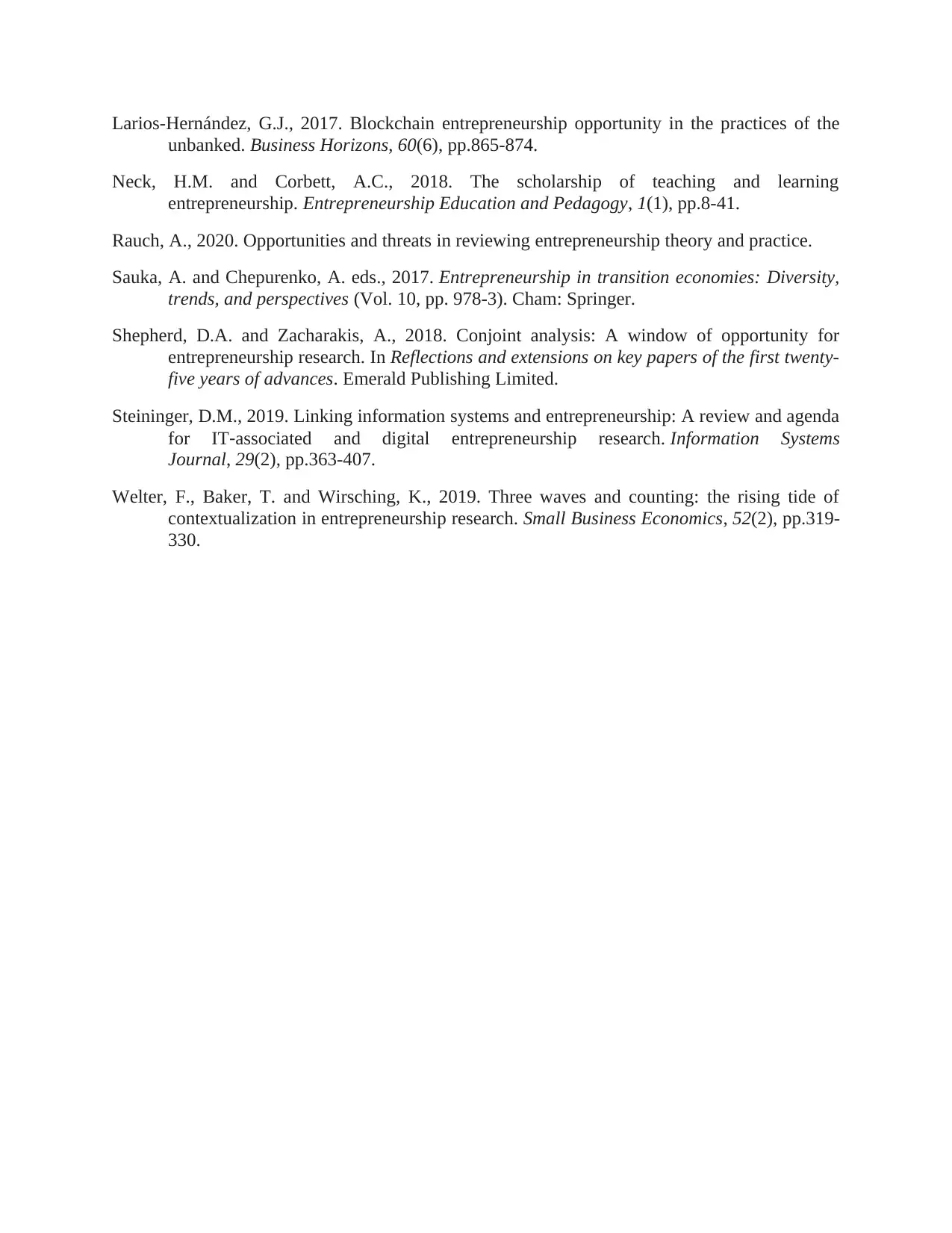
Larios-Hernández, G.J., 2017. Blockchain entrepreneurship opportunity in the practices of the
unbanked. Business Horizons, 60(6), pp.865-874.
Neck, H.M. and Corbett, A.C., 2018. The scholarship of teaching and learning
entrepreneurship. Entrepreneurship Education and Pedagogy, 1(1), pp.8-41.
Rauch, A., 2020. Opportunities and threats in reviewing entrepreneurship theory and practice.
Sauka, A. and Chepurenko, A. eds., 2017. Entrepreneurship in transition economies: Diversity,
trends, and perspectives (Vol. 10, pp. 978-3). Cham: Springer.
Shepherd, D.A. and Zacharakis, A., 2018. Conjoint analysis: A window of opportunity for
entrepreneurship research. In Reflections and extensions on key papers of the first twenty-
five years of advances. Emerald Publishing Limited.
Steininger, D.M., 2019. Linking information systems and entrepreneurship: A review and agenda
for IT‐associated and digital entrepreneurship research. Information Systems
Journal, 29(2), pp.363-407.
Welter, F., Baker, T. and Wirsching, K., 2019. Three waves and counting: the rising tide of
contextualization in entrepreneurship research. Small Business Economics, 52(2), pp.319-
330.
unbanked. Business Horizons, 60(6), pp.865-874.
Neck, H.M. and Corbett, A.C., 2018. The scholarship of teaching and learning
entrepreneurship. Entrepreneurship Education and Pedagogy, 1(1), pp.8-41.
Rauch, A., 2020. Opportunities and threats in reviewing entrepreneurship theory and practice.
Sauka, A. and Chepurenko, A. eds., 2017. Entrepreneurship in transition economies: Diversity,
trends, and perspectives (Vol. 10, pp. 978-3). Cham: Springer.
Shepherd, D.A. and Zacharakis, A., 2018. Conjoint analysis: A window of opportunity for
entrepreneurship research. In Reflections and extensions on key papers of the first twenty-
five years of advances. Emerald Publishing Limited.
Steininger, D.M., 2019. Linking information systems and entrepreneurship: A review and agenda
for IT‐associated and digital entrepreneurship research. Information Systems
Journal, 29(2), pp.363-407.
Welter, F., Baker, T. and Wirsching, K., 2019. Three waves and counting: the rising tide of
contextualization in entrepreneurship research. Small Business Economics, 52(2), pp.319-
330.
1 out of 10
Related Documents
Your All-in-One AI-Powered Toolkit for Academic Success.
+13062052269
info@desklib.com
Available 24*7 on WhatsApp / Email
![[object Object]](/_next/static/media/star-bottom.7253800d.svg)
Unlock your academic potential
Copyright © 2020–2025 A2Z Services. All Rights Reserved. Developed and managed by ZUCOL.





